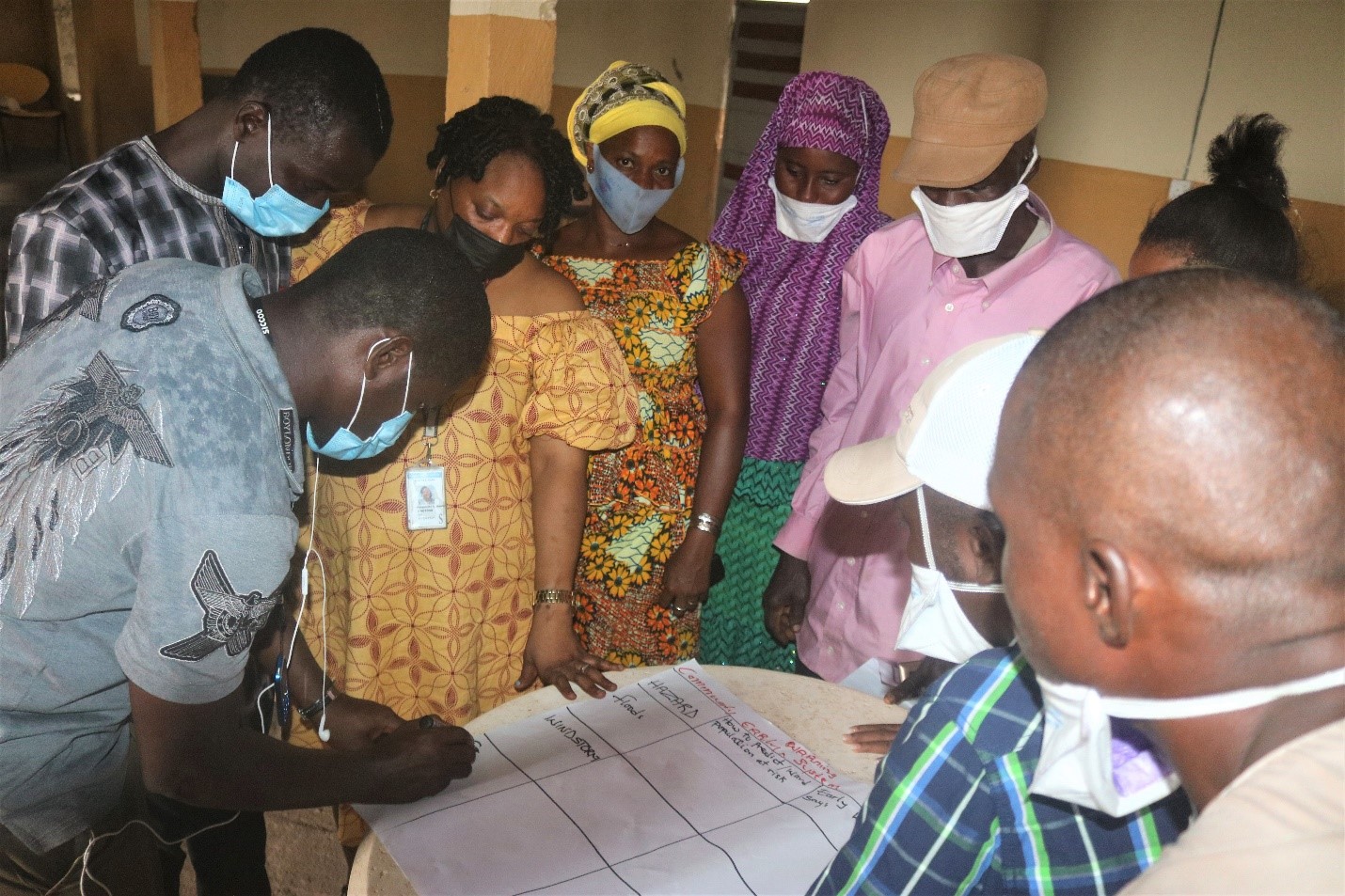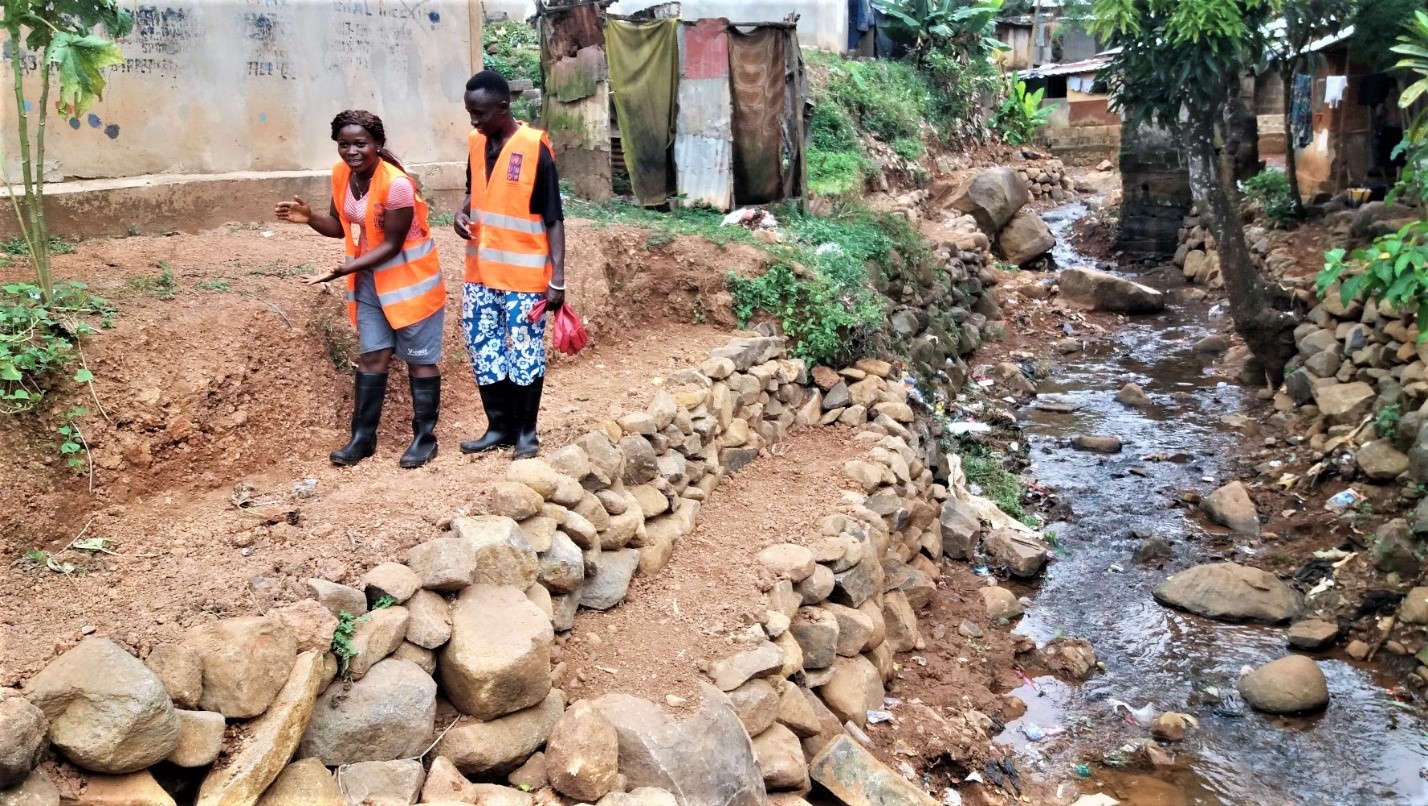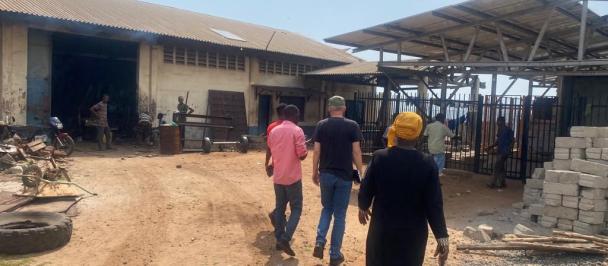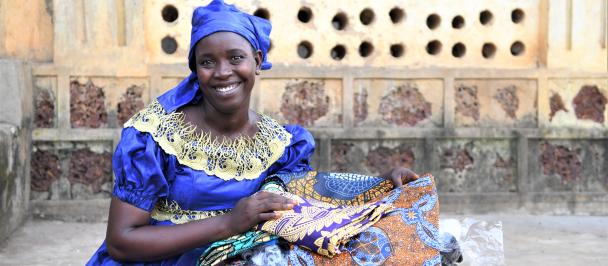Photo showing cross section of participants from both Dixing & Magbema Chiefdoms during a group session
“Our communities are prone to disaster considering the proximity of the Great Scarcies River especially when the water levels are high. With this training, we are now well informed to detect disaster risks and early warnings. This training has enriched our knowledge on disaster risk management skills,” says Chief Idriss Kargbo of Dixing Chiefdom, Kambia District.
Over 200 participants from 16 chiefdoms have benefitted from a disaster management training that has leaped into the establishment of sixteen (16) Chiefdom Disaster Management Committees (CDMCs) in Kambia and Pujehun Districts with support from UNDP in collaboration with the National Disaster Management Agency (NDMA). Targeted chiefdoms were earmarked and selected after thorough assessment of their vulnerabilities in terms of disaster shocks. These committees now comprised community members at chiefdom level including chiefs, market women, bike riders, teachers, military and police personnel, and members of other social networks within the community.
During session on the Standard Operating Procedure of Disaster Management, early warning signs and adaptation measure were identified at community level; community early warning focal person selected; community knowledge based on local early warning signs were improved; targeted community members fully understood community practices on traditional early warning activities; community risk mapping exercise by stakeholders and the production of risks map on hazards in targeted communities were accomplished- subsidizing knowledge with informed strategies to help build community resilience towards sustainable development and disaster risk management.
Facilitated by UNDP and NDMA experts, the training has bolster over 200 community members with improved capability and required aptitude to take leadership positions and champion disaster risks reduction and management within vulnerable communities through inclusive participations.
Photo showing UNDP trained community volunteers banking and constructing a gabion at Dwarzack communities
This intervention aims to enhance community capacity on risks reduction and foster commitments in achieving CDMCs’ role before, during and after emerging disaster within the piloted chiefdoms (Dixing, Magbema, Knonimakha, Bramaia, Masongabla, Mambolo, Samu, Manuthalah, Kpange, Malen, Kpange Krim and Kpaka, Mano Sakrim, Yekemo Kpukumu Krim, Gallines and Sorogbema), requiring broad-based actions from Government and commitments of local councils within its sphere of responsibilities to formulate and review contingency action plans. Similarly, the approach provides a list of major executive actions that are involved in responding to natural disasters coupled with the requisite actions for preparedness, response and relief that are to be tapped into to accelerate the understanding of CDMCs’ members.
“This training provides us an opportunity to sketch our own community risks and capturing disaster prone areas has enormously broaden our knowledge and prepared us for future hazards. The training has also helped communities within the respective chiefdoms with the capacity to tackle and be in preparedness to defeat emerging outbreaks,” says A.S.P Kenawa John Squire, Community Relations and Media Officer-Pujehun Police Division
All 16 CDMCs have identified defined roles and responsibilities to guide them in their preparedness to mitigate subsequent disasters through early responses and recovery activities.
Funding from UNDP had earlier reviewed Standard Operating Procedure (SOP) for CDMCs to reflect the interest of communities and other emerging issues on disaster risk reduction to save lives and properties; which is also a viable tool rolled out to guide the designated persons- lays down, in a comprehensive manner, the specific actions required to be taken by various CDMCs, Chiefs, Local Councils, ministries and departments of Government, District and Chiefdom Administrations for responding to natural disasters of any magnitude and dimension.

 Locations
Locations




